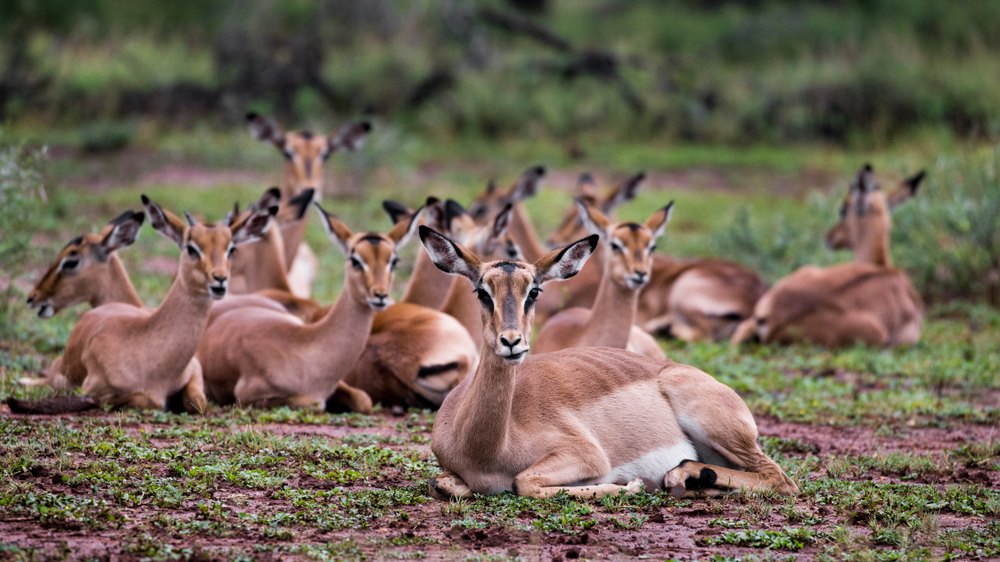About
#Antelope
#Mammals
The Impala, scientifically known as Aepyceros melampus, is a medium-sized antelope species found in sub-Saharan Africa. It belongs to the Animal Kingdom’s phylum Chordata, class Mammalia, and family Bovidae, which includes other antelope species like gazelles and wildebeests.
Impalas are highly adaptable herbivores inhabiting savannas, woodlands, and grasslands. They possess distinctive features, including reddish-brown coats with white underbellies and black markings on their ears, face, and tail. Both males and females have long, lyre-shaped horns, but males typically have larger and more robust horns. These antelopes exhibit sexual dimorphism, with males being larger than females.
Known for their agility and speed, impalas are capable of reaching speeds up to 60 kilometers per hour (37 mph) and can leap distances of up to 10 meters (33 feet) to evade predators such as lions, leopards, and cheetahs. They live in mixed herds composed of females, their offspring, and a dominant male, although bachelor groups may also form.
Conservation Concerns
Impalas are one of the most abundant and widespread antelope species in Africa and are not considered globally threatened. However, they face localized threats in certain regions, primarily due to habitat loss, fragmentation, and human-wildlife conflict. Increased agricultural activities, urbanization, and infrastructure development encroach upon their natural habitats, reducing available space and resources.
Although impalas are not specifically targeted by poachers, they are susceptible to incidental snaring intended for other species. Additionally, competition with domestic livestock for grazing areas can exacerbate food shortages during dry seasons. While impalas currently have a stable population trend, ongoing habitat conservation efforts, and sustainable land management practices are essential to ensure their continued survival in the wild. As of now, impalas are not listed on the IUCN Red List as a species of conservation concern
Threatened:
Extinct
Critically Endangered
Endangered
Vulnerable
Near Threatened
Least Concern

























































































